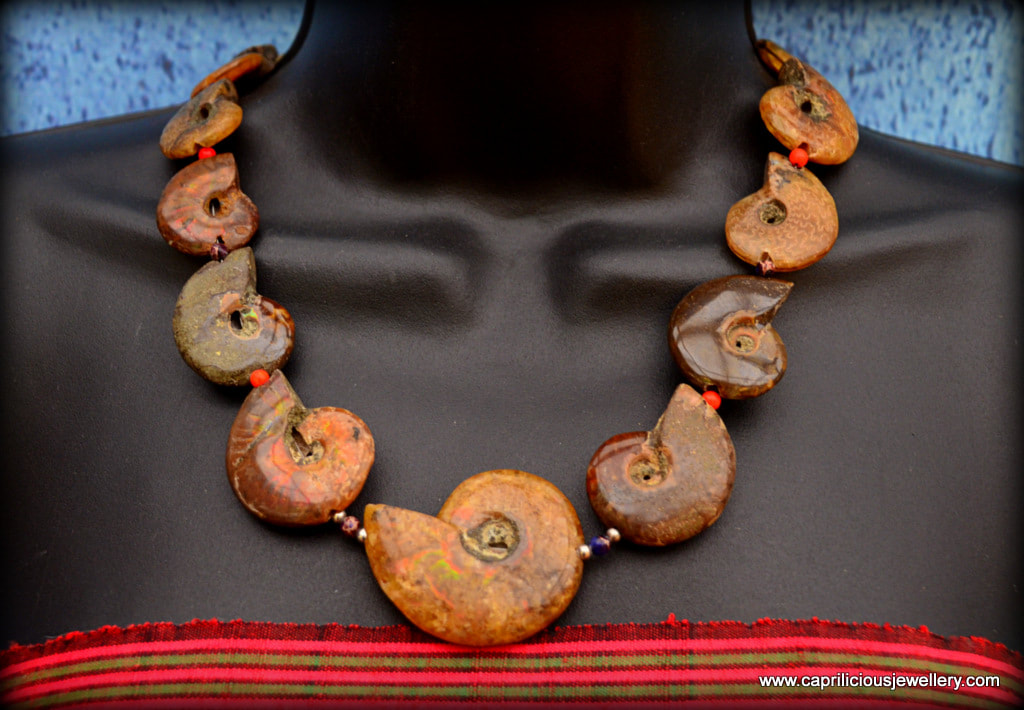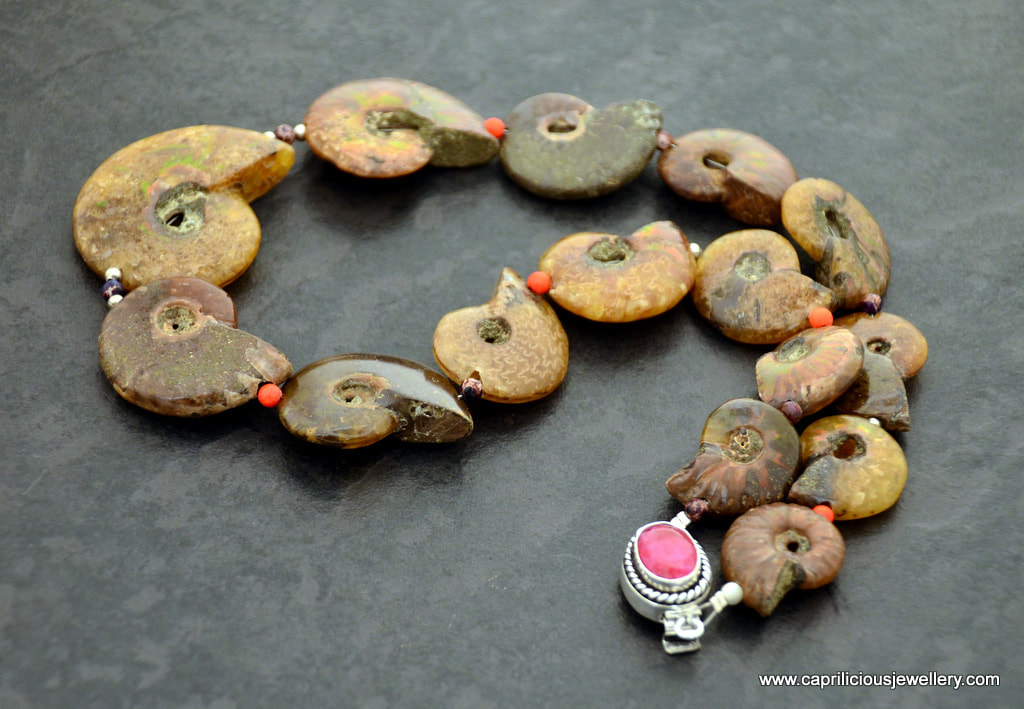|
Beautiful Handmade Statement Necklaces and other Fabulousness from Neena Shilvock - Inspirations and Designs From the Week Gone by
Good day folks, thanks for coming back to Caprilicious for a look at my week. The weather has been vile, with two named storms hitting us back to back bringing gale force winds strong enough to kill a woman sleeping peacefully in her caravan, by flipping it over a cliff. Fortunately that was a rare occurrence, but the wind was wild and wooly, and scary. This week was extremely hectic, my mother was unwell and I almost flew back to India - I had actually booked tickets to fly out for a couple of weeks, causing all sorts of disruption at work, only to be told that she was OK and that I wasn't needed. I cancelled my tickets, and went back to my colleagues sheepishly, announcing the reversal of my decision. Oh well, couldn't be helped. The minute I knew I wasn't flying back into a SH1T storm, I heaved a sigh of relief and picked up some beads. Samudra (Ocean) I've had a couple of strings of ammonites for ages, and used them sparingly putting them into my soutache pieces in dribs and drabs. I love them because they are so ancient - it feels great to use an ancient item, that was once a live creature into my jewellery. They have shiny shells, that are translucent, with a beautiful shimmer in their depths. Ammonites were marine animals belonging to the phylum Mollusca and the class Cephalopoda. They had a coiled external shell similar to that of the modern nautilus.  Ammolite Ammolite They are beautiful when cut in half, and the shiny part of their outer shells form Ammolite which is almost opal like in its iridescence. Early works of natural history compared the coiled form of the ammonite with that of a serpent, and ammonites became widely known as snakestone. They take their name from the Egyptian god Amun, known to the Greeks as Zeus Ammon.This god is depicted on Cyrean coins and in sculpture by a head with curling ram's horns. Many genera of ammonites have names ending in -ceras from the Greek word 'keras' meaning horn.
I am totally in awe of their age and think it's an honour to be able to wear them in jewellery, apart from their obvious beauty. I'm sorry that the YouTube film I've added is a bit simplistic, but I thought it showed exactly what happens to the ammonites to turn them into fossils in a very simple way. AfrikaThe pendant is so very tribal, and so are the arrowheads, and I put them with spikes of dyed blue howlite. This was a sort of random selection during a routine rummage, an 'I'll add this, and what about these, and Oh! this might do as well' sort of a collection of beads and baubles, and I was totally surprised by the outcome. I love it, it turned out to be really pretty. That's me for this week folks, the parental situation has exhausted me somewhat and depleted my energies. It is strange to suddenly realise that you're all grown up and have to assume responsibility for another person (never having had children, I know nothing of this) and in fact you're the grownup! Hmm, better late than never, I s'pose. I intend to catch up on my sleep, and pamper my poor arthritic knees all weekend.
Have a fabulous week and I'll catch you next Friday, same time, same place. Until then xx
2 Comments
I find ammonites fascinating. I had the opportunity of interacting with store owners selling Saligram in Nepal and learnt about about them. While I lost some of my religious fervour related to saligram at that point, I was great experience to know of the science behind it.
Reply
25/9/2018 08:40:35 pm
Thanks Divya, I will pass on your best wishes to mom.
Reply
Your comment will be posted after it is approved.
Leave a Reply. |
Follow
|









